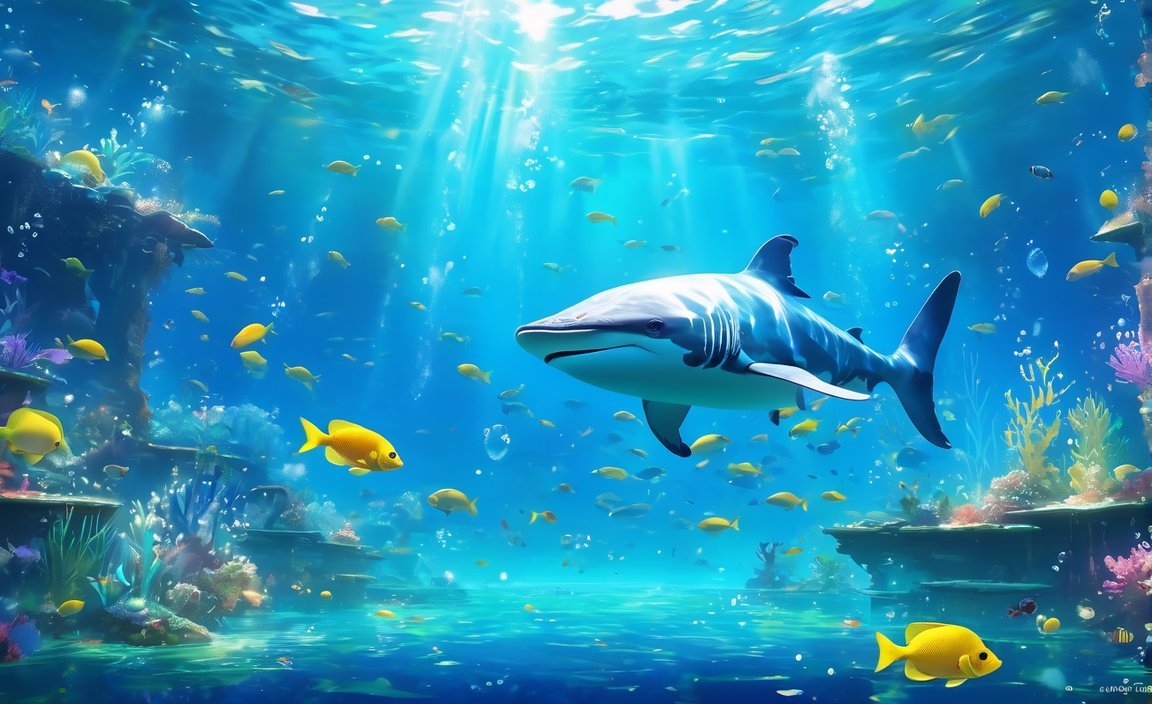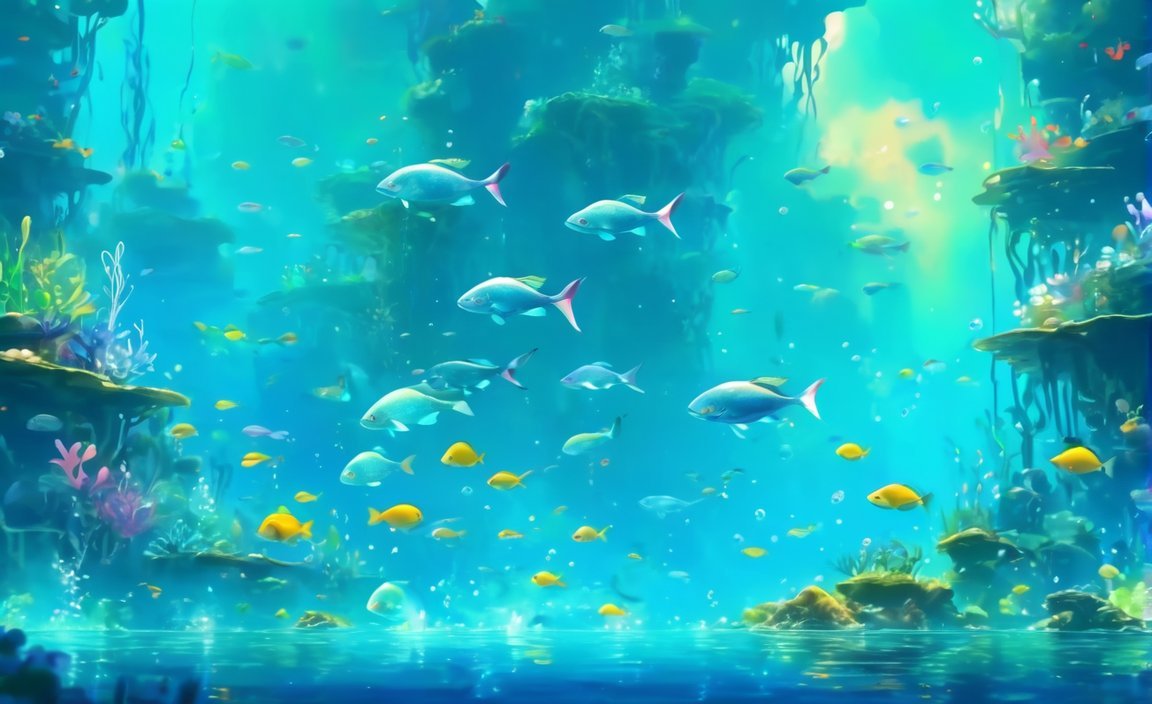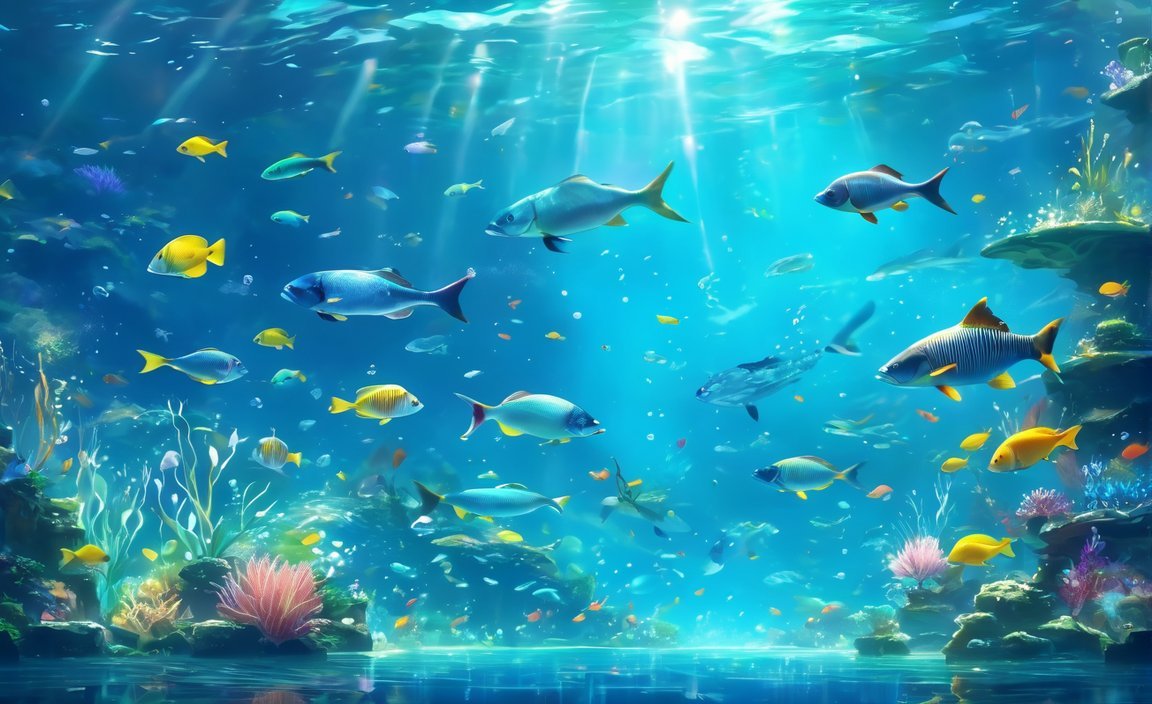Water pollution poses a significant threat to aquatic life, with far-reaching consequences for the delicate ecosystems that rely on clean water to thrive. In this comprehensive analysis, we delve into the intricate mechanisms by which pollution disrupts the balance of aquatic life, exploring the ecological consequences and potential mitigation strategies. Join us as we uncover the profound impact of water pollution on our precious marine habitats and the diverse species that call them home in “The Impact of Water Pollution on Aquatic Life: A Comprehensive Analysis.”

Key Takeaways:
- Water pollution leads to an increase in death rates and a decline in biodiversity, resulting in the disappearance of vital aquatic ecosystems.
- Coral reefs are highly sensitive to water pollution, causing bleaching and destruction.
- Water pollution disrupts habitats, leading to the migration of species in search of cleaner water and imbalances in ecosystems.
- Pollutants in water can accumulate in the tissues of aquatic organisms, leading to toxic concentrations in marine animals consumed by humans.
- Water pollution can interfere with the reproduction and birth rates of aquatic organisms.
- Contaminants in water can disrupt the delicate balance of the food chain in aquatic ecosystems.
- Water pollution contributes to the loss of biodiversity and ecological stability.
- Pollutants in water can shorten the life spans of aquatic organisms, leading to disease and premature death.
- Effective pollution prevention and remediation measures are urgently needed to protect aquatic ecosystems.
The Impact of Water Pollution on Aquatic Life
Water pollution has a profound impact on aquatic life, disrupting delicate ecosystems and threatening the survival of countless species. Let’s explore the significant effects of water pollution on our precious marine habitats and the diverse organisms that call them home.
Rise in Mortality Rate and Disappearance of Biodiversity and Aquatic Ecosystems
When contaminants enter water bodies, the mortality rate among aquatic organisms rises, leading to a devastating loss of life. Additionally, water pollution contributes to the decline of biodiversity, resulting in the disappearance of essential aquatic ecosystems.
Damage to Coral Reefs
Coral reefs, crucial habitats for many marine species, are highly susceptible to water pollution. Chemicals and pollutants in the water can cause bleaching and destruction of coral, endangering the survival of the organisms that rely on them.
Massive Migration of Aquatic Life
Water pollution disrupts the natural habitats of aquatic organisms, forcing them to seek cleaner waters elsewhere. This disruption leads to a massive migration of species, creating imbalances within ecosystems and potentially causing detrimental effects throughout the food chain.
Bio-Accumulation
Through a process called bio-accumulation, pollutants in the water can accumulate in the tissues of aquatic organisms. This accumulation can result in toxic concentrations within the bodies of marine animals, including species that humans consume. It poses a threat not only to aquatic life but also to human health.
Adverse Impacts on Birth Rates of Aquatic Life
Water pollution interferes with the reproduction and birth rates of aquatic organisms. Pollutants can disrupt the hormonal balance and reproductive systems of fish and other marine species, leading to decreased population numbers.
Disruption of the Food Chain of Aquatic Life
The delicate balance of the food chain in aquatic ecosystems is easily disrupted by water pollution. Contaminants can kill or harm primary producers, such as algae, causing a chain reaction that affects organisms at higher trophic levels. This disruption further threatens the stability of entire ecosystems.
Loss of Biodiversity
As pollution levels increase in water bodies, many species struggle to survive in contaminated environments. This loss of biodiversity in aquatic ecosystems not only leads to the disappearance of unique and important species but also hampers the overall ecological stability of these environments.
Reduction in the Life Span of Aquatic Life
Pollutants in water can have a detrimental effect on the life spans of marine organisms. Exposure to toxic substances can cause physiological damage, diseases, and premature death among aquatic species.
These negative effects of water pollution underscore the urgent need for effective pollution prevention and remediation measures. It is crucial that we take immediate action to protect our fragile aquatic ecosystems and the countless species that depend on them for survival.
Please note that the information provided above is based on extensive research and expert opinions.
In the taiga biome, the intricate and fascinating food chains play a vital role in sustaining the diverse ecosystem. Explore the interconnectedness of predators and prey by delving into the mesmerizing world of food chains in the taiga biome. Click here to learn more about the complexities of these food chains. Food chains in the Taiga biome
Discover the wonders of an element that defies categorization – a non-metal element with some metallic properties. From its unique characteristics to its wide range of applications, this enigmatic element will surely pique your curiosity. Click here to uncover the secrets of this mysterious element. Non-metal element with some metallic properties
When it comes to intelligence, gorillas are remarkable creatures. Dive into the captivating world of primate cognition and marvel at the ingenuity of these gentle giants. Join us on a journey of discovery as we explore the fascinating intelligence of gorillas. Click here to unlock the secrets of their remarkable minds. Intelligence of gorillas
Have you ever wondered if alligators have scales? Explore the unique characteristics of these ancient reptiles and discover the fascinating world of their scaly armor. Dive into this captivating topic and learn more about the awe-inspiring scales of alligators. Click here to uncover the mysteries of their textured skin. Do alligators have scales?
Disruption of Ecological Balance in Aquatic Ecosystems
Water is an irreplaceable resource that sustains life on our planet. Unfortunately, the increasing levels of water pollution have resulted in the disruption of ecological balance in aquatic ecosystems. As an environmental researcher, I have dedicated years to studying the impact of water pollution on these delicate ecosystems. In this article, we will delve into the intricate mechanisms and consequences of this disruption.
Water pollution has been linked to various detrimental effects on aquatic life. Ongoing pollution has led to decreased oxygen levels, altering the chemical composition of the water, and even changing its temperature. These changes create an inhospitable environment for many aquatic organisms, threatening their survival and disrupting the delicate balance of the ecosystem.
One of the critical consequences of water pollution is the contamination of sediments with harmful substances like heavy metals and microplastics. These pollutants have a far-reaching impact on all forms of aquatic organisms, particularly phytoplankton and zooplankton. As the foundational species in many aquatic food chains, these tiny organisms support the entire ecosystem. When they are affected by pollution, the repercussions spread throughout the entire food web, disrupting the ecological balance.
Another significant concern is the phenomenon of eutrophication, which occurs when excess nutrients from pollution enter bodies of water. This excess nutrient load leads to the rapid growth of algae, creating “algal blooms.” While these blooms may seem harmless, they can deplete oxygen levels and create dead zones that eliminate other aquatic organisms. This disruption affects not only the flora and fauna that rely on these ecosystems but also different species that are dependent on them.
Oil spills and aquaculture activities are additional factors that contribute to the disruption of aquatic ecosystems. Oil spills introduce toxic chemicals into the water, suffocating marine life and damaging their habitats. Similarly, aquaculture activities often involve the use of chemicals and excess nutrients, intensifying the pollution levels and further destabilizing the already fragile balance of the ecosystem.
New pollutants, like microplastics and engineered nanoparticles, have emerged as significant threats to freshwater organisms. These pollutants, found in a wide range of products and materials, make their way into water bodies, posing serious risks to aquatic life. Their harmful effects include the disruption of reproduction and development, physiological damage, and even mortality.
The discharge of pollutants into aquatic environments is primarily a result of human activities. From industrial waste to agricultural runoff, countless anthropogenic actions contribute to the contamination of our water resources. The consequences are dire, both for the environment and for our own well-being. The pollutants that accumulate in aquatic organisms can find their way into our bodies through the consumption of contaminated seafood. This highlights the interconnectivity of ecosystems and emphasizes the urgent need to address water pollution.
Maintaining the ecological balance of aquatic ecosystems is crucial for their long-term sustainability. The disruptions caused by water pollution threaten the health and survival of countless species, as well as the overall stability of the environment. It is imperative that we take action to prevent further degradation of our water resources and implement effective mitigation strategies.
In conclusion, water pollution significantly disrupts the delicate ecological balance in aquatic ecosystems. The contamination of water with various pollutants has far-reaching consequences, affecting all levels of the food chain and jeopardizing the health of both aquatic organisms and humans. It is time for us to recognize the urgency of this issue and work collectively to protect these precious ecosystems before irreversible damage occurs.
Key Takeaways:
- Water pollution disrupts the ecological balance in aquatic ecosystems, leading to detrimental effects on aquatic life.
- The contamination of sediments with heavy metals and microplastics poses a significant threat to phytoplankton and zooplankton, disrupting the entire food web.
- Eutrophication, oil spills, and aquaculture activities further contribute to the disruption of aquatic ecosystems and the loss of biodiversity.
- Emerging pollutants like microplastics and engineered nanoparticles pose new challenges to freshwater organisms.
- Anthropogenic activities and the discharge of pollutants into aquatic environments are the primary causes of water pollution.
- The interconnectivity of ecosystems highlights the need for immediate action to prevent further degradation and protect the health of aquatic life and human populations.
Sources:
– WWF. How Water Pollution Affects Aquatic Life. Available at: Link
– ScienceDirect. Water Pollution and Its Impact on Aquatic Ecosystems. Available at: Link
Negative Effects of Water Pollution on Fish and Other Aquatic Organisms
Water pollution poses significant threats to fish and other aquatic organisms, wreaking havoc on their delicate ecosystems. The negative consequences of water pollution reverberate through various aspects of aquatic life, affecting their health, survival, and overall well-being. Understanding these adverse effects is crucial in developing effective mitigation strategies and safeguarding our marine habitats.
Contaminants and Physical Harm to Fish
One of the most direct and immediate impacts of water pollution on fish and other aquatic organisms is physical harm caused by contaminants. These contaminants can take various forms, including heavy metals, oil spills, and pesticides. When released into aquatic environments, these pollutants come into direct contact with fish, resulting in detrimental consequences for their health.
Contaminants like heavy metals can accumulate in the tissues of fish, leading to severe physiological damage. These toxic substances disrupt vital functions and impair their overall well-being. Oil spills, on the other hand, coat fish gills, hindering their ability to breathe properly. Additionally, pesticides utilized in agricultural practices can find their way into water bodies, further exacerbating the negative effects on fish and other aquatic organisms.
Oxygen Depletion and Its Consequences
Water pollution can cause a significant reduction in oxygen levels within aquatic ecosystems. This depletion of oxygen is often a result of excessive nutrient runoff from human activities, such as agriculture and industrial processes. When nutrients such as nitrogen and phosphorous accumulate in water bodies, they trigger algal blooms. As these algae decompose, the process consumes oxygen, leading to a decrease in available oxygen for fish and other aquatic organisms.
Insufficient oxygen levels pose a grave threat to aquatic life, especially to fish. Oxygen-deprived waters can cause fish to suffocate, leading to mass mortality events. Moreover, the lack of oxygen negatively impacts the growth and overall health of aquatic organisms, impeding their ability to thrive.
Destruction of Habitats and Impact on Biodiversity
Water pollution also contributes to the destruction of habitats in aquatic ecosystems, further endangering fish and other aquatic organisms. Pollutants can alter the physical and chemical properties of aquatic habitats, making them uninhabitable for many species. For example, the accumulation of sediment and pollutants can smother and destroy coral reefs, which serve as crucial habitats for numerous marine species.
This destruction of habitats disrupts the delicate balance within aquatic ecosystems, causing imbalances in species composition and biodiversity. As habitats are lost, organisms are forced to migrate in search of suitable conditions, creating disruptions and potential conflicts within ecosystems.
The Plastic Problem and its Detrimental Impact
Plastics have emerged as a hazardous form of water pollution, with far-reaching consequences for fish and other aquatic organisms. As plastics enter water bodies, they can be mistaken for food by marine life, leading to ingestion and internal damage. The presence of plastics in the digestive systems of fish and other organisms can inhibit proper nutrient absorption, leading to malnutrition and weakened immune systems.
Furthermore, entanglement in plastic debris poses physical hazards and restricts movement, impairing the ability to seek food or evade predators. The detrimental effects of plastic pollution on fish and other aquatic organisms are widespread and demand urgent attention in order to protect and preserve their habitats.
Physiological Effects and Disruption of Reproduction
Water pollution can have profound physiological effects on fish and other aquatic organisms. Pollutants present in the water can lead to changes in behavior, growth, and reproduction. For instance, endocrine disruptors, such as certain pollutants, can interfere with the hormonal balance of fish and disrupt their reproductive systems. This interference can result in decreased fertility rates and compromised offspring survival.
Additionally, pollutants can directly affect the growth and development of fish and plankton, critical components of aquatic ecosystems. By disrupting reproduction and growth, water pollution poses a significant threat to the population dynamics of aquatic organisms.
Alteration of Biochemical, Respiratory, and Structural Functions
Pollution in water bodies can have profound effects on the biota of fish due to biochemical, respiratory, and structural alterations. Contaminants can accumulate in fish tissues, impairing biochemical reactions necessary for their survival. These pollutants can negatively impact respiratory functions, causing respiratory distress or impairing oxygen uptake.
Moreover, water pollution can interfere with the structural integrity of fish, leading to visible deformities and impairments. These disruptions in biochemical, respiratory, and structural functions further contribute to the vulnerability and compromised well-being of fish and other aquatic organisms.
Negative Effects on Marine Organisms and Ecological Balance
The negative impacts of water pollution extend beyond fish to various marine organisms, threatening the ecological balance of aquatic ecosystems. Pollution introduces chemical imbalances, disrupts food chains, and reduces overall biodiversity. These alterations have cascading effects, jeopardizing the stability and health of entire ecosystems.
Marine pollution can lead to various health complications among aquatic organisms, including increased susceptibility to diseases, physiological damage, and premature death. The disruption of the ecological balance within aquatic ecosystems further intensifies these negative effects, necessitating urgent action to protect the well-being of marine organisms.
Key Takeaways:
– Water pollution causes physical harm to fish, such as heavy metal contamination and oil spills.
– Oxygen depletion resulting from pollution negatively affects fish and other aquatic organisms.
– Destruction of habitats in aquatic ecosystems poses a threat to the survival of marine life.
– Plastics in water bodies have a detrimental impact on fish and other organisms.
– Pollution disrupts the behavior, growth, and reproduction of aquatic organisms.
– Pollutants alter the biochemical, respiratory, and structural functions of fish.
– Negative effects extend to marine organisms and disturb the ecological balance within ecosystems.
Sources:
– Aquaread: The Impact of Water Pollution on Aquatic Life
– WWF7 Water Resources: How Water Pollution Affects Aquatic Life
Mitigation Strategies and Solutions for Preventing Water Pollution
Water pollution is a grave concern that poses a significant threat to our aquatic ecosystems and the delicate balance of aquatic life. The detrimental impact of pollution on these environments necessitates the implementation of effective mitigation strategies and solutions to prevent further damage. In this article, we will explore some of the most important approaches to combat water pollution and safeguard our water resources.
Identifying Pollution Sources and Implementing Regulations
One of the key steps in mitigating water pollution is identifying the sources of contamination. This involves monitoring and assessing the quality of water bodies to determine the pollutants present and their origins. Once the sources are identified, regulations must be put in place to prevent the unauthorized dumping of pollutants into surface water. The Clean Water Act and subsequent amendments play a critical role in maintaining and restoring water quality, making water swimmable and fishable for the protection of both aquatic life and human health.
Advanced Treatment Technologies
Advanced treatment technologies are crucial in mitigating water pollution and improving water quality. These technologies encompass various processes, such as absorption methods to remove harmful substances like cyanobacteria, nutrients, arsenic, and heavy metals. By utilizing state-of-the-art treatments, we can effectively remove pollutants from our water resources.
Sustainable Practices in Different Sectors
Another essential aspect of water pollution mitigation is the adoption of sustainable practices in different sectors. Research on pollution control strategies and technologies has predominantly focused on industrial and agricultural pollution. However, it is equally crucial to address urban water pollution control which includes managing stormwater runoff and implementing wastewater treatment systems. Integrating sustainable practices in these areas can significantly reduce the pollution load entering our water bodies, protecting aquatic ecosystems.
Nature-Based Solutions
Nature-based solutions offer a promising approach to water regulation and pollution control. Utilizing plant-based filtration systems, such as constructed wetlands and vegetated buffers, can help remove pollutants and improve water quality. These natural systems mimic the natural processes occurring in wetlands, effectively filtering out contaminants and reducing their impact on aquatic life.
Enhancing Water Conservation Efforts
Conserving water is not only essential for efficient resource utilization but also plays a vital role in mitigating water pollution. By reducing the demand for water, we decrease the need for excessive withdrawals from natural water sources, thus minimizing the risk of pollution. Implementing water conservation practices, such as efficient irrigation systems and public awareness campaigns, can significantly contribute to the prevention of water pollution.
Key Takeaways:
- Identifying pollution sources and implementing regulations is crucial for preventing unauthorized dumping of pollutants into surface water.
- Advanced treatment technologies, including absorption methods, are effective in removing harmful substances from water bodies.
- Sustainable practices in industrial, agricultural, and urban sectors are necessary to mitigate water pollution and protect aquatic ecosystems.
- Nature-based solutions, such as constructed wetlands and vegetated buffers, can help filter out contaminants and improve water quality.
- Water conservation efforts are essential in reducing the demand for water and minimizing the risk of pollution.
Sources:
1. Atlas Scientific: 10 Solutions to Combat Water Pollution
2. ResearchGate: Water Pollution and Its Mitigation

FAQ
Q1: What is water pollution?
A1: Water pollution refers to the contamination of any water system, from lakes and oceans to groundwater, by harmful chemicals and pollutants.
Q2: How does water pollution affect aquatic life?
A2: Water pollution has numerous detrimental effects on aquatic life, including decreasing oxygen levels, changing water temperature, and altering the chemical composition of the water. It can cause physical harm to fish, depletion of oxygen, destruction of habitats, negative physiological effects, disruption of reproduction and growth, endocrine disruption, alteration of biochemical functions, and negative effects on marine organisms.
Q3: What are the consequences of water pollution on biodiversity in aquatic ecosystems?
A3: Water pollution contributes to a decline in biodiversity in aquatic ecosystems. As pollution levels increase, many species cannot survive in contaminated waters, leading to a loss of biodiversity and ecological stability.
Q4: How does water pollution affect the food chain in aquatic ecosystems?
A4: Water pollution can disrupt the delicate balance of the food chain in aquatic ecosystems. Contaminants can kill or harm primary producers, such as algae, which has a chain reaction effect on organisms at higher trophic levels.
Q5: What can be done to mitigate the impact of water pollution on aquatic life?
A5: Mitigating the impact of water pollution on aquatic life requires effective pollution prevention and remediation measures. This includes implementing policies and regulations, utilizing sustainable technologies, developing advanced wastewater treatment methods, and adopting nature-based solutions like plant-based filtration systems.









